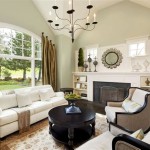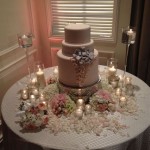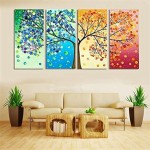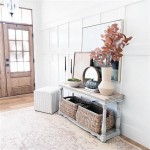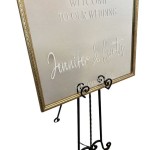How to Decorate Your Dresser: A Comprehensive Guide
The dresser, often relegated to a purely functional role, offers a significant opportunity to enhance the aesthetic appeal of a bedroom. Thoughtful decoration can transform a simple piece of furniture into a focal point, reflecting personal style and contributing to the overall ambiance of the room. This article provides a detailed guide on how to decorate a dresser effectively, exploring various strategies and design elements to create a visually appealing and functional space.
Understanding the Purpose and Style of the Dresser
Before embarking on any decorating project, it is essential to consider the primary purpose of the dresser and its existing style. Is the dresser primarily for storage, display, or a combination of both? The answer to this question will influence the types of decorative items chosen and their placement. Furthermore, the style of the dresser itself—modern, traditional, rustic, or eclectic—should inform the selection of complementary decor. A minimalist modern dresser, for example, would benefit from simple, understated accessories, while a traditional dresser might accommodate more ornate and elaborate embellishments. Examining the dresser's inherent features, such as its hardware, color, and size, can guide the selection of appropriate decorative elements.
Consider the overall aesthetic of the room. The dresser decoration should harmonize with the existing color palette, furniture style, and overall theme. A cohesive approach ensures a visually pleasing and balanced space. Mismatched decor can detract from the room's aesthetic appeal, creating a sense of disarray rather than harmony.
Another factor to deliberate is the available space. A large dresser in a spacious room allows for more elaborate and extensive decoration, whereas a smaller dresser in a compact room necessitates a more minimalist and restrained approach. Overcrowding a small dresser can make the room feel cluttered and cramped.
Strategic Placement of Items
The arrangement of items on the dresser is crucial to achieving a balanced and visually appealing display. The principles of design, such as balance, symmetry, and asymmetry, can be applied to create a dynamic and engaging arrangement. Balance refers to the equilibrium of visual weight on either side of the dresser. Symmetry involves arranging identical or similar items in a mirrored fashion, while asymmetry involves arranging dissimilar items in a way that creates visual interest and balance without perfect mirroring.
Varying the height and size of the decorative items adds depth and dimension to the dresser display. Grouping items in odd numbers, such as three or five, often creates a more visually pleasing arrangement than even numbers. This principle arises from the human tendency to find patterns and order in asymmetry, which can be more engaging than perfect symmetry.
Consider the background behind the dresser. A blank wall provides a neutral backdrop, allowing the decorative items to stand out. Conversely, a patterned wallpaper or a bold paint color might necessitate a more restrained approach to avoid overwhelming the space. The backdrop should complement the dresser decoration, providing a harmonious and balanced visual experience.
Utilizing trays and boxes can help to organize and contain smaller items, creating a sense of order and preventing clutter. Trays can serve as a base for grouping decorative objects, while boxes can conceal everyday items, such as jewelry or keys, while adding a decorative element to the dresser.
Utilizing Key Decorative Elements
A wide range of decorative elements can be incorporated to enhance the aesthetic appeal of the dresser. The choice of elements should align with the overall style of the room and the personal preferences of the individual. Some key decorative elements include:
Mirrors: A well-placed mirror can significantly enhance the functionality and visual appeal of a dresser. A mirror above the dresser can reflect light, making the room appear brighter and more spacious. It can also serve as a focal point, drawing the eye and adding a touch of elegance to the space. Different mirror styles, such as ornate framed mirrors or sleek frameless mirrors, can complement various design aesthetics.
Lamps: A table lamp on the dresser provides both functional lighting and decorative interest. The lamp should be appropriately sized for the dresser and the room, and its style should complement the overall decor. The lampshade can be chosen to match the color palette or add a pop of color to the space. The warm glow of a lamp can create a cozy and inviting atmosphere.
Artwork: Paintings, prints, or photographs can add personality and visual interest to the dresser. Leaning artwork against the wall creates a relaxed and informal look, while hanging artwork above the dresser provides a more structured and formal aesthetic. The artwork should be chosen to complement the color palette and style of the room. Personal photographs can add a sentimental touch, making the space feel more personal and inviting.
Plants and Flowers: Adding plants or flowers to the dresser can bring a touch of nature into the room, creating a sense of freshness and vitality. Green plants can purify the air and add a calming element to the space. Flowers, whether fresh or artificial, can add a pop of color and fragrance. The choice of plants and flowers should be appropriate for the lighting conditions and the overall style of the room.
Decorative Boxes and Trays: These items offer both aesthetic appeal and practical storage solutions. They can be used to corral smaller items, such as jewelry, keys, or cosmetics, keeping the dresser top organized and clutter-free. Decorative boxes and trays come in a variety of materials, colors, and styles, allowing them to be easily integrated into any decor scheme. The choice of materials and styles should complement the other decorative elements on the dresser.
Sculptures and Decorative Objects: Small sculptures, figurines, or other decorative objects can add personality and visual interest to the dresser. These items should be chosen to reflect personal interests and style. They can be arranged in groupings to create a cohesive and visually appealing display. The size and scale of the objects should be appropriate for the dresser and the room.
Books: A stack of books can add a touch of intellectual curiosity and visual interest to the dresser. The books can be chosen for their covers, their content, or their sentimental value. They can be arranged horizontally or vertically, depending on the desired aesthetic. Consider adding a small decorative object on top of the book stack to add depth and dimension to the display.
Maintaining Functionality and Avoiding Clutter
While decorative elements are important, it is crucial to maintain the functionality of the dresser and avoid creating clutter. The dresser should remain a practical storage space, and the decorative items should not impede access to the drawers. It is important to strike a balance between aesthetics and functionality.
Regularly decluttering the dresser is essential to maintaining a clean and organized space. Remove items that are no longer needed or used, and donate or discard them. Dusting the dresser and the decorative items is also important to maintaining a clean and polished look. A clean and organized dresser will enhance the overall aesthetic appeal of the room.
Avoid overcrowding the dresser with too many decorative items. A minimalist approach can often be more effective than a maximalist approach. Choose a few key decorative elements that you love and arrange them thoughtfully. Less is often more when it comes to decorating a dresser.
Consider using drawer organizers to keep the contents of the drawers neat and tidy. This will make it easier to find items and prevent clutter from spilling onto the dresser top. Organize items by category and label the drawers for easy access. This will help to maintain a functional and organized space.
In summary, decorating a dresser involves careful consideration of its purpose, style, and the overall aesthetic of the room. Strategic placement of items, utilizing key decorative elements, and maintaining functionality are all crucial to creating a visually appealing and functional space. By following these guidelines, one can transform a simple dresser into a focal point that reflects personal style and enhances the overall ambiance of the bedroom.

Styling A Bedroom Dresser Decorate With Tip And More

Dresser Decor Ideas Sunset

10 Dresser Decor Ideas Living Spaces

How To Style A Dresser With Five Beautiful Ideas
:max_bytes(150000):strip_icc()/display-accessories-around-a-dresser-973705e11efb4d3587839ab585ec9574.jpeg?strip=all)
36 Dresser Decor Ideas To Keep Your Space Stylish And Tidy
:strip_icc()/102272801-31e9c648da9d4cc1a0ed4358bb1d0b9b.jpg?strip=all)
Easy Ways To Style A Dresser
:strip_icc()/114920061-cb47176aac644f4b9db1a653f23b498a.jpg?strip=all)
Easy Ways To Style A Dresser

Decorating A Dresser Top Made Easy Rustic Crafts Diy

How To Style A Dresser With Five Beautiful Ideas
:strip_icc()/EugeniaJesbergbyEricRorer-f45613d01da44eeda4832f73f088d568.png?strip=all)
7 Easy Ways To Make Your Dresser Top Look Expensive
See Also

